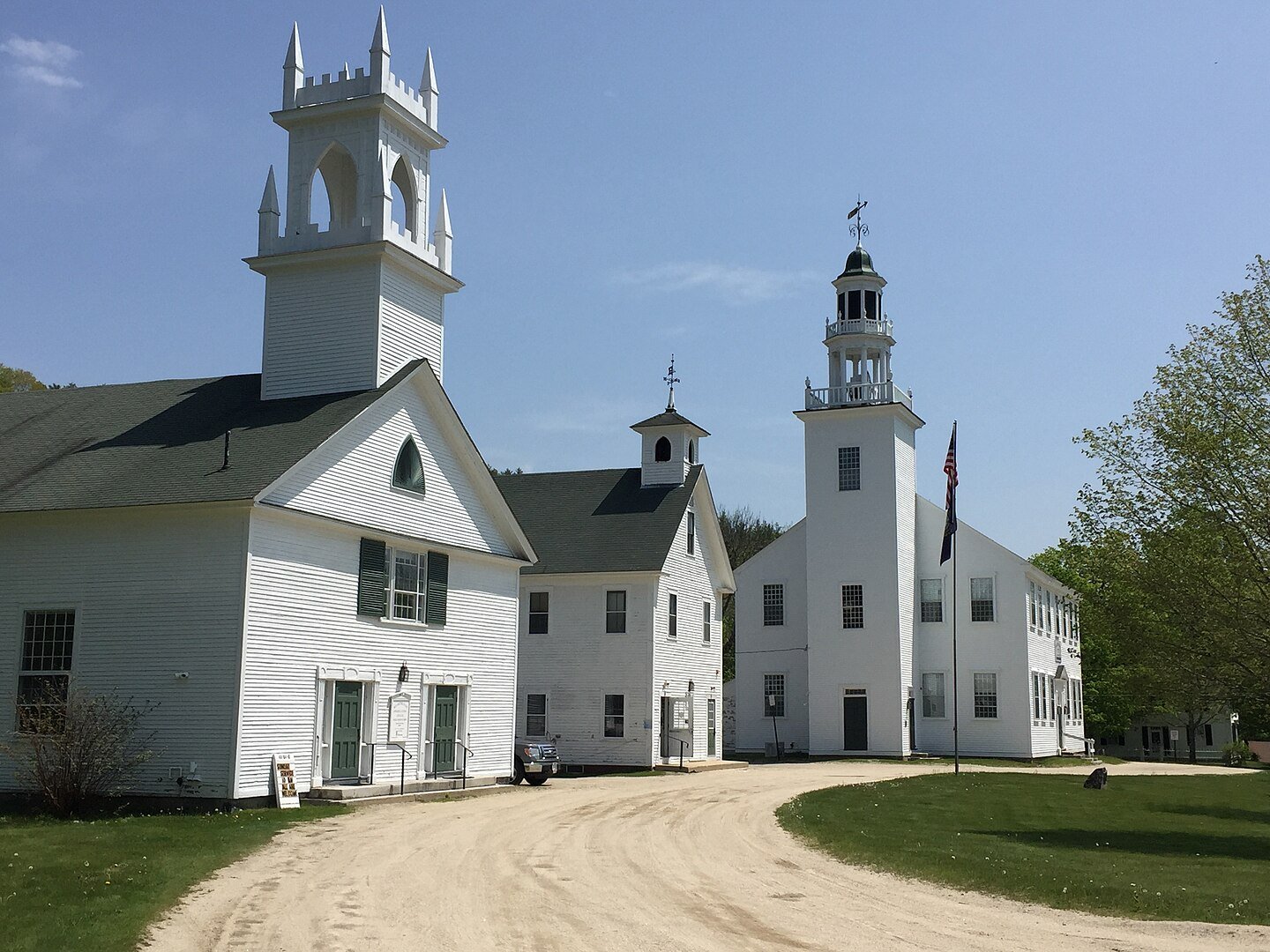
When I think of Southern Nevada, the bright lights of Las Vegas often come to mind first. But beyond the city’s bustling energy lie secluded towns that offer a different kind of allure.
These hidden gems provide tranquil landscapes, rich histories, and a chance to escape the fast pace of modern life. I’ve explored many of these places myself, discovering the unique charms each one holds.
If you’re yearning for solitude, natural beauty, or just a slice of quiet desert life, these twenty five secluded towns in Southern Nevada might just be the perfect getaway.
25. Panaca’s Green Desert Outpost
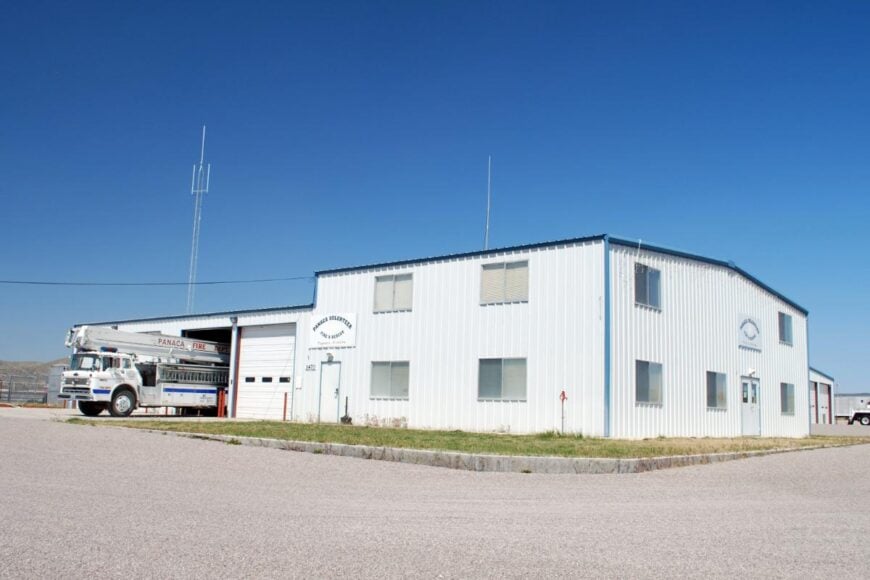
Nestled in southeastern Lincoln County, Panaca is a small Mormon-rooted town of around 1,000, cradled between desert plains and backed by sapphire skies and distant mountains. The town feels miles from the modern rush—State Route 319 runs through it, but beyond that.
Historic brick storefronts line the main street, and the Panaca Ward Chapel, built in the 1860s, whispers of pioneer days beneath the endless Nevada sky. You can head minutes west to Cathedral Gorge State Park, where bentonite canyons frame hiking trails and picnic spots.
Agriculture remains the backbone—hay, livestock, and crops shape the rhythm of life, while events like Pioneer Day tie neighbors together. There’s no gambling, no neon—just clean air and quiet roots. It’s the kind of place that makes you discover stillness feels like coming home.
Where is Panaca?
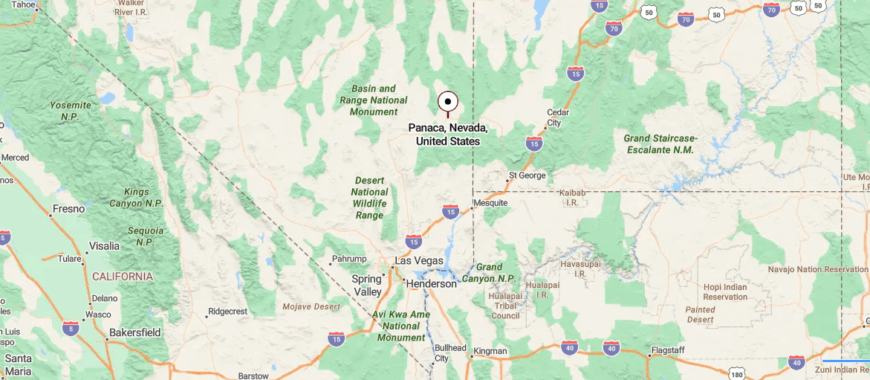
Panaca, Nevada lies in eastern Lincoln County, near the Utah border in a high desert valley framed by rugged hills. It’s about 165 miles north of Las Vegas and just west of the state line, reached via U.S. Highway 93 and a short turn onto State Route 319.
The drive rolls past dry basins and sagebrush plains before arriving at the town’s quiet streets and historic charm. Out here, the silence stretches wide, and the landscape feels untouched—like a place time simply forgot to rush.
24. Pioche’s Cliffside History
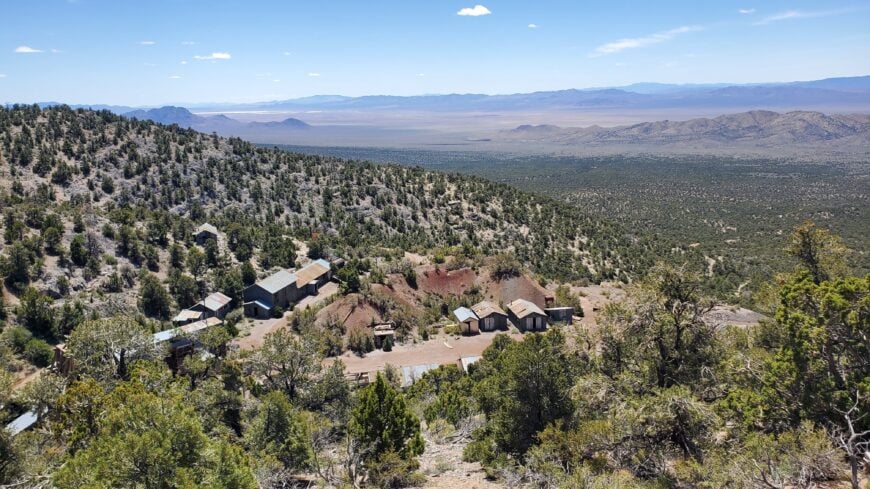
Perched in Nevada’s high desert and off U.S. 93, Pioche claims just under 1,000 residents but feels suspended in its Wild West heyday. Rugged hills and sweeping skies buffer the town from modern bustle, so the only echo is history.
Its main street still hosts the rough-hewn Million Dollar Courthouse, Thompson’s Opera House (1873), and saloons whispering of gunfights and frontier grit. You can stroll Boot Hill Cemetery, tour the county museum, or explore old mining tramway ruins before heading out to nearby Echo Canyon or Spring Valley State Parks for hiking and fishing.
Economy here has shifted from silver to county government, ranching, tourism, and the odd thrill‑seeking ghost hunter. Days drift slowly—dust settles on porch rails, wind whispers through empty storefronts. It’s the kind of place where the silence speaks louder than voices.
Where is Pioche?
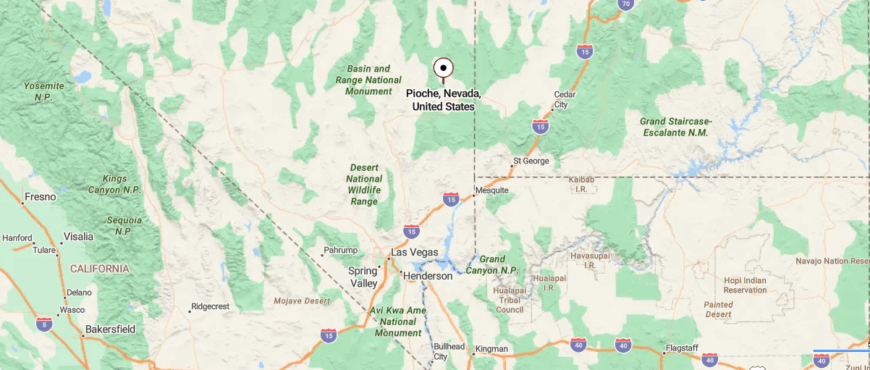
Pioche, Nevada sits high in eastern Lincoln County, perched at 6,060 feet in the remote hills of the Great Basin. It’s about 175 miles northeast of Las Vegas, reached via U.S. Highway 93 and a short turn onto State Routes 321 or 322.
The drive crosses wide desert flats and sagebrush before climbing into town, where historic buildings still echo its mining boom past. Here, the silence feels storied—like the land remembers everything, and time moves at the pace of wind and dust.
23. Alamo’s Desert Lakeside Calm
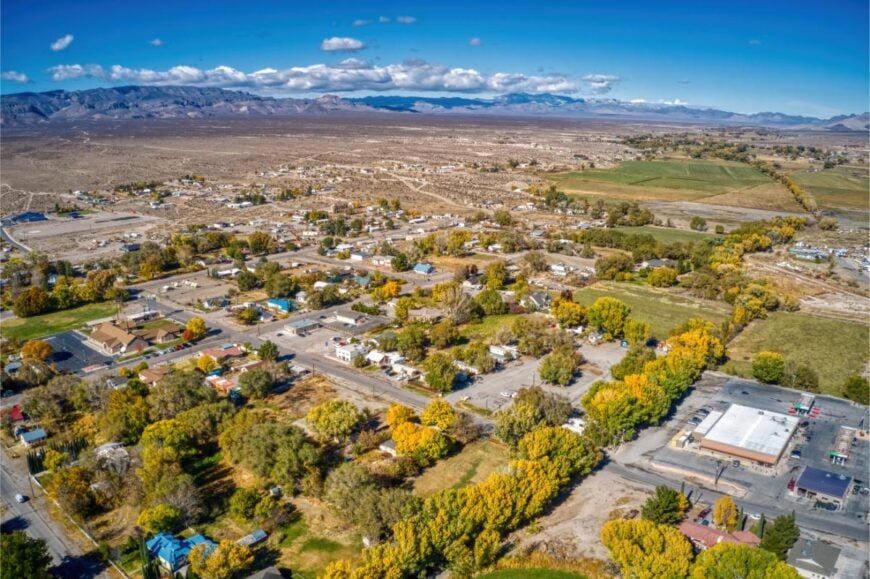
Nestled in Pahranagat Valley, Alamo lies about 90 miles north of Las Vegas along U.S. Route 93—yet it feels worlds away. With just over 800 residents, the town is framed by desert mountains and wrapped in quiet, open skies. Cottonwood-lined streets drift into silence, and the pace moves with the sun.
You can hike and birdwatch at Pahranagat National Wildlife Refuge, explore petroglyphs at Ash Springs, cast a line at the lake, or follow the nearby Extraterrestrial Highway into Area 51 legend. Farming and ranching still ground the local way of life.
There are no crowds, no neon—just desert calm and big sky. It’s the kind of place that makes you feel the quiet stretch wide around you.
Where is Alamo?
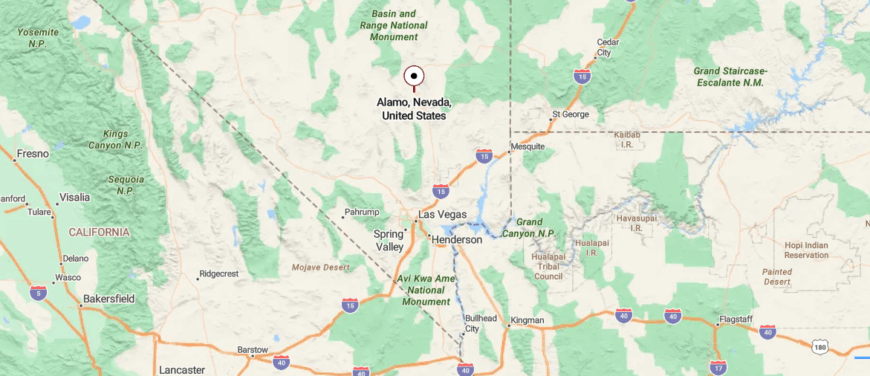
Alamo, Nevada sits in southern Lincoln County, nestled in the narrow ribbon of the Pahranagat Valley beneath surrounding mountain ranges. It’s about 90 miles north of Las Vegas, perched along U.S. Highway 93 and just off State Route 319—an easy turn onto a quiet valley road that leads into town.
The road sweeps through sagebrush-dotted desert, then passes lush green ranches and poplar trees (‘alamos’) before the town’s small grid of homes, café, school, and gas station appears.
Out here, the sky and desert stretch wide, and Alamo feels like a peaceful oasis—a place where the hush of ranchland meets the stillness of distant wilderness.
22. Hiko’s Farmland Frontier
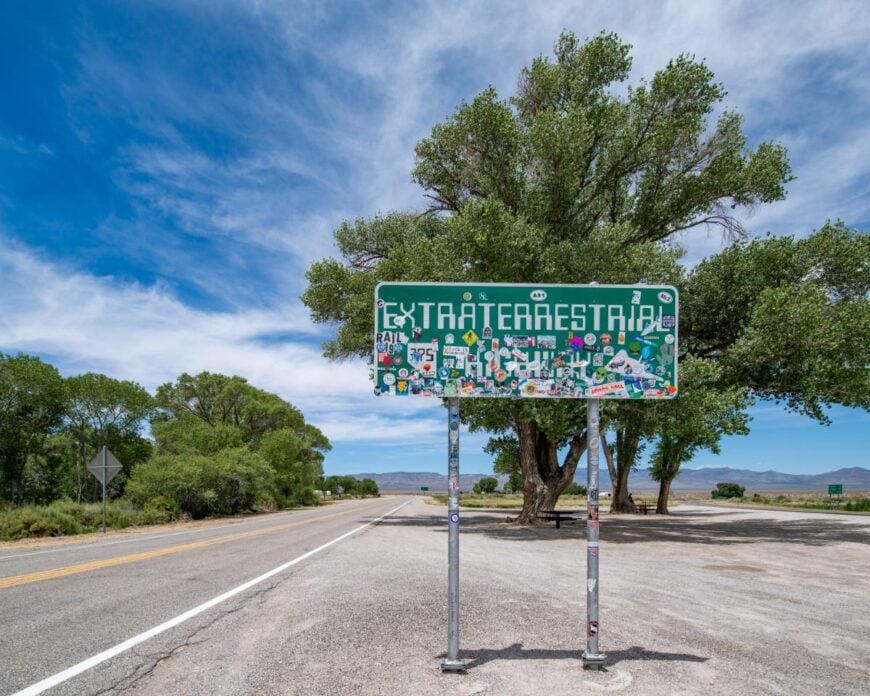
Tucked into the Pahranagat Valley along State Route 318, Hiko is a tiny agrarian community of roughly 120 residents, surrounded by desert mesas and mountain-fed springs. Its isolation feels total—once a county seat in the 1860s, it faded decades ago, and today it exists as a quiet point of water, wind, and memory.
Dusty roads lead to remnants of silver‑mill ruins and the red‑rock general store, each echoing a Wild West past. You might wander to Hiko Springs, explore the half‑ghost petroglyph site on Mount Irish, visit the Alien Research Center near the Extraterrestrial Highway, or wander into Weepah Spring Wilderness for canyons and ancient art.
Ranching and small‑scale farming still anchor daily life, driven by the valley’s spring‑fed water and wide horizons. The town’s voice is hushed—wind carries stories instead of traffic, and the open sky holds more sunset than map lines. It’s the kind of place that teaches you how deep a silence can feel when the world around it stays still.
Where is Hiko?
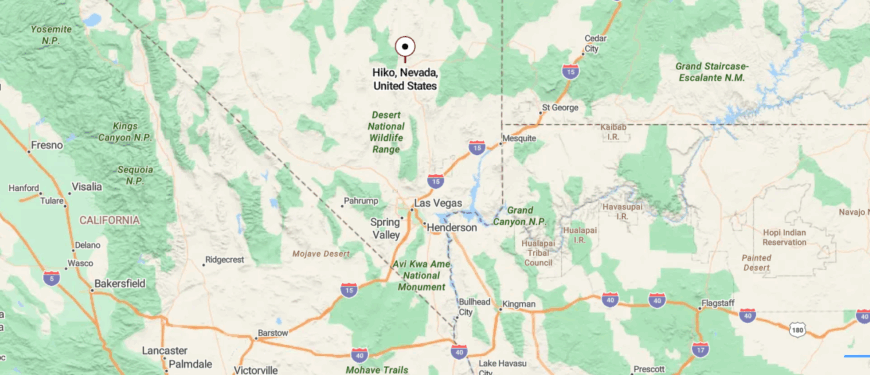
Hiko, Nevada lies in eastern Lincoln County, in the northern end of the Pahranagat Valley of the Tonopah Basin. It sits along rural State Route 318, roughly 165 miles (about 3½ hours) northeast of Las Vegas, and a short drive north from Alamo via U.S. Highway 93.
To reach it, you turn off Highway 93 onto SR 318 and follow a quiet stretch through sagebrush plains and cattle ranches, passing low hills and agricultural fields before a cluster of homes, a post office, and a few historic structures unfold amid the desert hush.
Here, the silence feels layered with memory—of silver rush dreams, long-running ranching life, and a desert vastness that holds you in its stillness.
21. Crystal’s Dusty Serenity
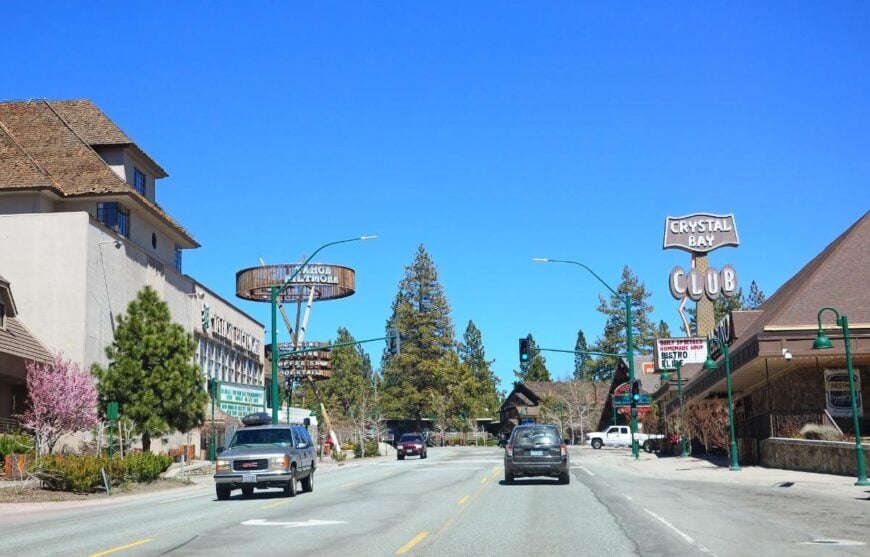
Crystal is a sparse, unincorporated community in Nye County, roughly 80 miles northwest of Las Vegas, reached by a quiet exit off State Route 160 and flanked by Mojave Desert vistas. Its isolation is total—no town center, just a handful of brothels, a roadside rest stop, and a Brothel Art Museum echoing a fringe past.
Desert winds sweep through empty lots where mining hopes once flickered, and the only traffic is occasional and indifferent. Visitors come to visit the offbeat museum, explore brothel signage and relics, or drive out to nearby ghost town ruins and sweeping desert scenery.
There’s no real local economy—tourism tied to curiosity and government-maintained services for travelers keep it in quiet life. Silence surrounds you here, broken only by heat-shimmered air and a peculiar sense of faded ambition. It’s the kind of place that reminds you how little remains when a town holds only memory.
Where is Crystal?
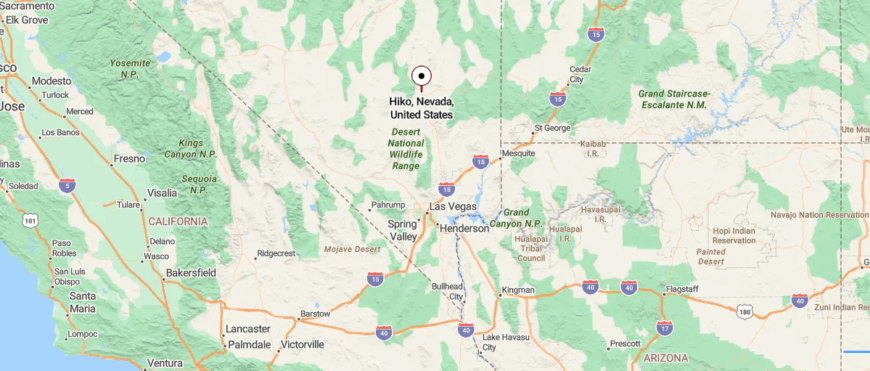
Crystal, Nevada is a tiny unincorporated community nestled in the arid reaches of Nye County, about 80 miles northwest of Las Vegas, just off State Route 160. It’s situated in the Mojave Desert, reached by turning from SR 160 onto a short paved spur that heads past scrubby sage and distant hills.
The route passes broad desert flats, minimal signage, and a few brothels and bars—Crystal’s most visible landmarks—before arriving at its sparse collection of buildings. Here, the silence feels monumental, and the wide desert space gives the sense that civilization is a distant echo, broken only by the occasional neon glow in the distance.
20. Logandale’s Hidden Red Rock Community
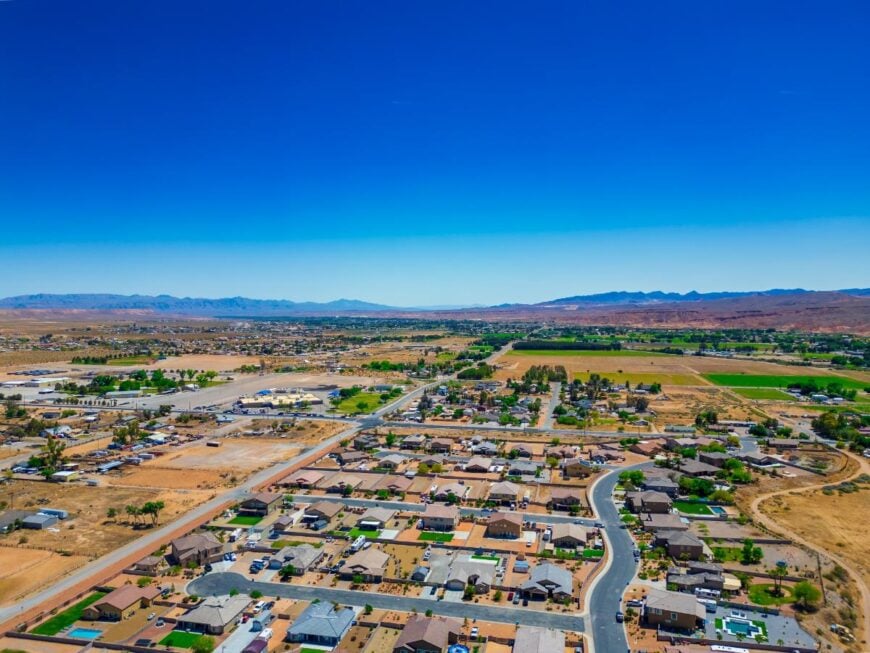
Set at the northern edge of Moapa Valley, Logandale feels quietly removed despite lying just off I‑15 via State Route 169. With around 3,000 residents, it offers rural calm—desert mesas, irrigated fields, and the steady hum of the Muddy River replacing city sounds.
Mornings smell of alfalfa; evenings settle under wide, painted skies. You can explore 200+ miles of ATV trails, birdwatch at nearby wildlife refuges, visit the local museum, attend the Clark County Fair & Rodeo, or hike near ancient petroglyphs.
Farming and ranching still shape daily life, tied to the land and local tradition. There’s no flash here—just open sky and honest stillness. It’s the kind of place that shows how grounding a quiet town can be.
Where is Logandale?
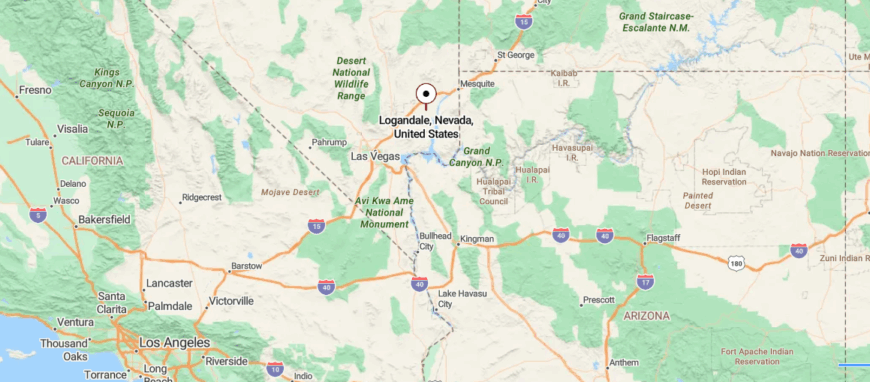
Logandale, Nevada rests at the north end of Moapa Valley in Clark County, nestled between desert and the meandering Muddy River in southeastern Nevada. It’s about 57 miles (roughly an hour’s drive) northeast of Las Vegas, reached via Interstate 15 (exit 93) and then a peaceful stretch along State Route 169 that becomes Moapa Valley Boulevard.
The route winds through sagebrush plains and ranchland, passing the town of Overton before arriving at Logandale’s quiet grid of homes, a community center, and venues for the annual Clark County Fair and Rodeo. It’s a place where the valley atmosphere feels hushed and intimate—like a gentle breath beneath the endless Nevada sky.
19. Overton’s Riverside Stillness
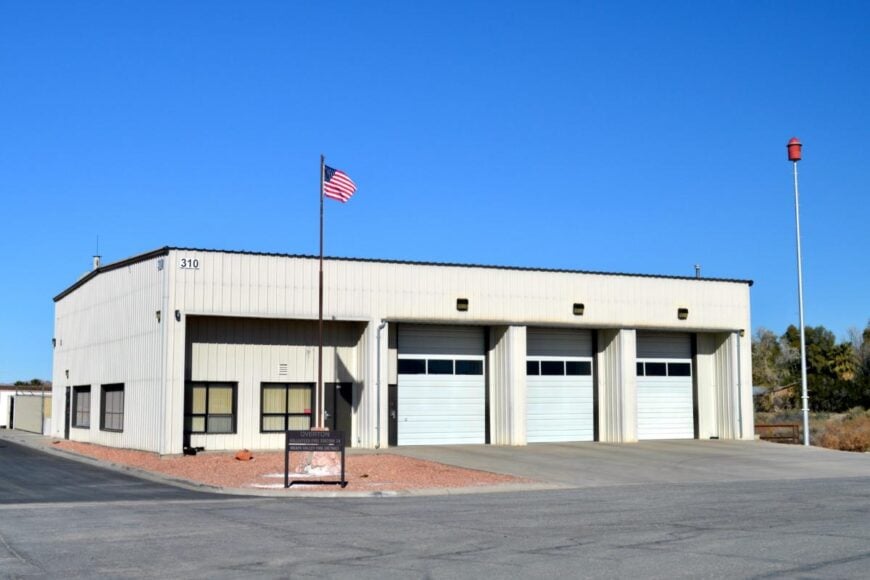
Overton sits quietly in the Moapa Valley, about 65 miles northeast of Las Vegas, framed by desert mesas, foothills, and the distant shimmer of Lake Mead. Though State Route 169 connects it to I‑15, the town feels a world apart, buffered by open land and the steady flow of the Muddy River.
With around 3,800 residents, it holds a small-town hush—quiet streets, few storefronts, and echoes of its Mormon pioneer roots. You can visit the Lost City Museum, explore Valley of Fire’s sandstone canyons and petroglyphs, or trace old railroad lines through the basin.
Agriculture—hay, livestock, and small-scale crops—still shapes daily life, alongside nature-based tourism. There’s no neon, no rush—just desert air and a long, quiet view. It’s the kind of place that makes the world pause just enough to listen.
Where is Overton?

Overton, Nevada lies in Clark County at the north end of Lake Mead, nestled within the Moapa Valley approximately 65 miles northeast of Las Vegas. It sits just off State Route 169 and Interstate 15, making it a gateway to the stunning Valley of Fire State Park around 16 miles to the south.
To reach it, you follow I‑15 north, exit at SR 169, and then drive through desert foothills and ranchland before stepping into Overton’s small town center with its historic museum and local landmarks.
Here, with red-rock mesas rising in the distance and the Lost City Museum whispering stories of ancient Puebloan life, the place feels suspended in time—quiet but deeply resonant.
18. Moapa’s Windswept Open Land
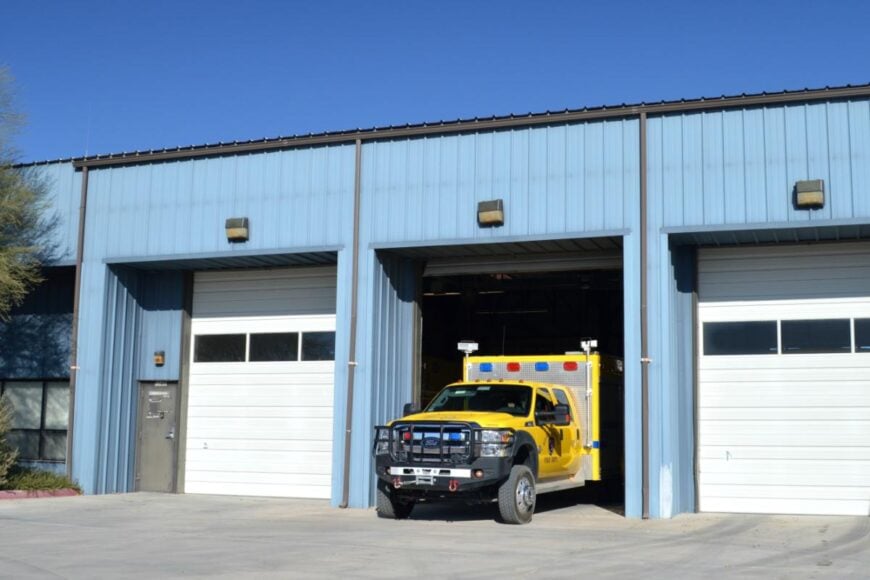
Tucked into the heart of Moapa Valley, the small community of Moapa (population around 700–1,000) feels miles away from the city, though it’s just 60 miles northeast of Las Vegas. Shielded by desert mesas and fed by the Muddy River, its open landscape and quiet streets offer a calm refuge from the rush.
Mornings arrive with desert air and the hum of irrigation; evenings fade beneath endless sky. You can explore Ancestral Puebloan history at the Lost City Museum, hike Valley of Fire’s red-rock canyons, birdwatch at the wildlife refuge, dine at Muddy River Bar & Grill, or visit ghost town ruins near St. Thomas.
Farming, ranching, and renewable energy—like the Moapa Paiute solar project—anchor local life. There’s no neon, no traffic—just sun, soil, and silence. It’s the kind of place that lets the desert hush settle into your bones.
Where is Moapa?
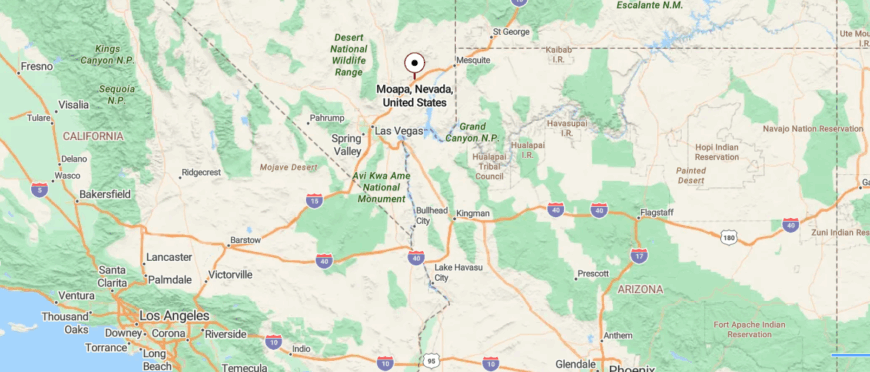
Moapa, Nevada sits in Clark County within the quiet stretch of Moapa Valley, about 60 miles northeast of Las Vegas. It lies near the Muddy River and shares the valley with nearby towns like Overton and Logandale.
Reached via I-15 and State Route 169, the drive passes through desert basins, ranch fields, and cottonwood groves before arriving at Moapa’s small cluster of homes and farmland. Out here, the hush of the valley and the wide desert sky create a feeling of calm that lingers long after arrival.
17. Austin Whispers of Silver
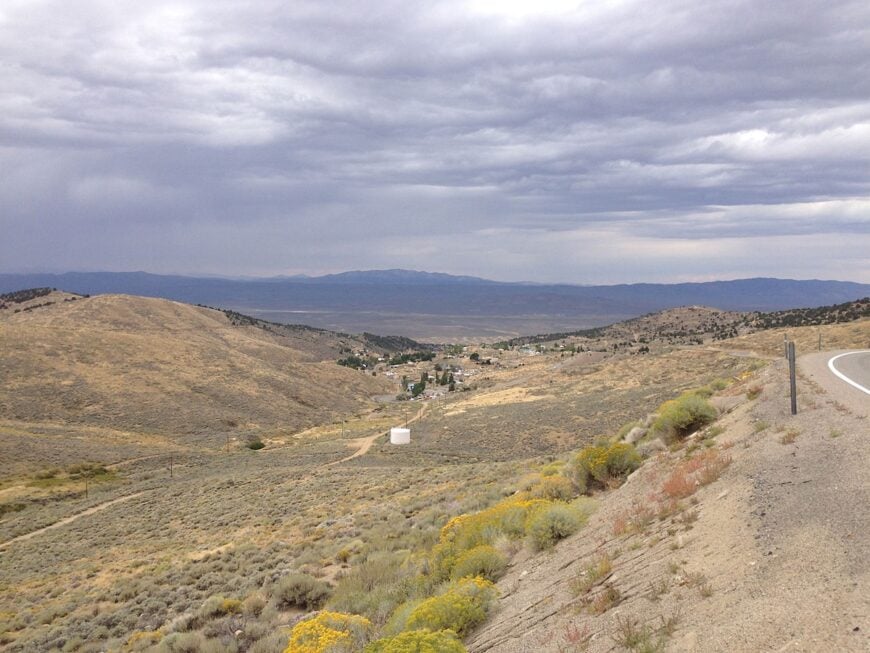
Austin perches on a windswept plateau beside the Reese River, where brick storefronts and historic stone buildings stand guard over a population barely into the triple digits. Founded during the 1862 silver boom, the town still wears its frontier history on every weathered façade and dusty sidewalk. Mornings begin with the clang of the courthouse bell and the low hum of ranch trucks pulling into town for supplies; by afternoon, the sun warms the old mining tunnels and the horizon flares gold against distant peaks.
Life here moves at the pace of the seasons. Winters can isolate you behind drifts of snow and ice, while summers bring brief storms that swell the river and chase hikers back to shaded porches. A handful of artisans, historians, and ranching families share this high-desert enclave, drawn by the promise of wide-open land and a community tied to its roots. Evenings find residents clustered in the local saloon swapping stories of long ago, while overhead the Milky Way sails bright and unbroken.
There are no chain stores, no stoplights—only a general mercantile, a handful of B&Bs, and the occasional gallery celebrating local silver art. Austin feels less like a stop on US 50 and more like its own world, where solitude is measured not in cell-phone bars but in the space between stars.
Where is Austin?
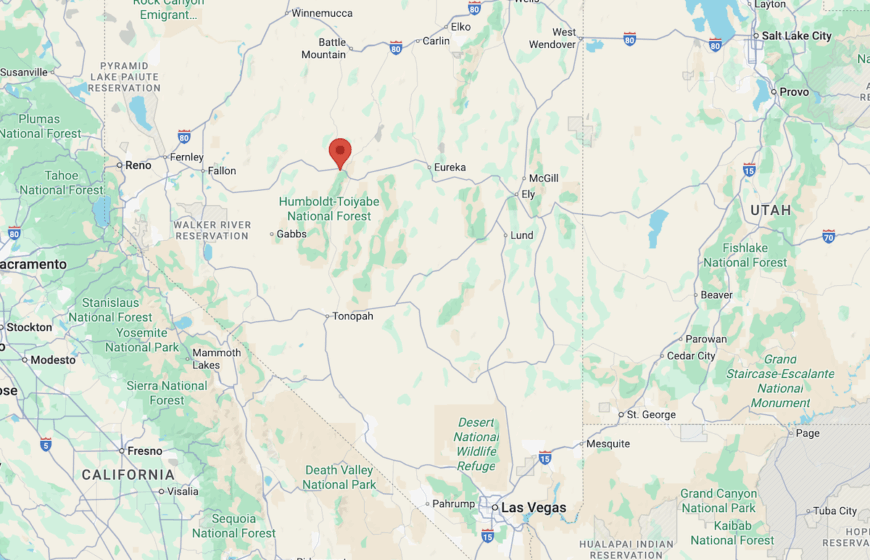
Austin sits at about 6,600 feet in central Nevada’s Lander County, straddling US 50—the “Loneliest Road in America”—along the banks of the seasonal Reese River. It lies roughly 120 miles east of Fallon and 190 miles west of Eureka, framed by rugged desert hills and distant mountain ridges.
To reach it, head north from US 50 at the junction with NV 305 (the main drag through town) or simply follow US 50 through the basin. The highway undulates across sagebrush flats and occasional ranch gates before climbing gently into the historic district, where the town’s signature green-and-white courthouse dome comes into view against the expansive high-desert sky.
16. Jean’s Desert Pause Point
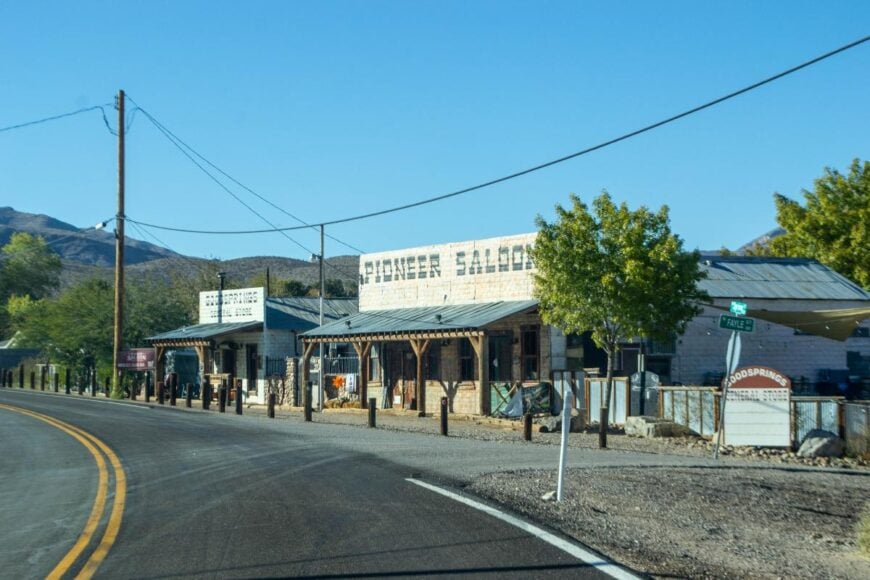
Jean is an unincorporated town in Clark County, situated about 30 miles south of Las Vegas and 12 miles north of the California border, but the silence feels worlds apart from the Strip.
Its isolation is shaped by the Mojave Desert’s flat expanses, Interstate 15 frontage with little else around—only commercial outlets and the county post office serve the larger area.
The local economy functions as a travel hub—fuel stops, convenience stores, skydiving, and occasional tourism tied to desert art or filming traffic—not farming or traditional small-town industry.
Where is Jean?
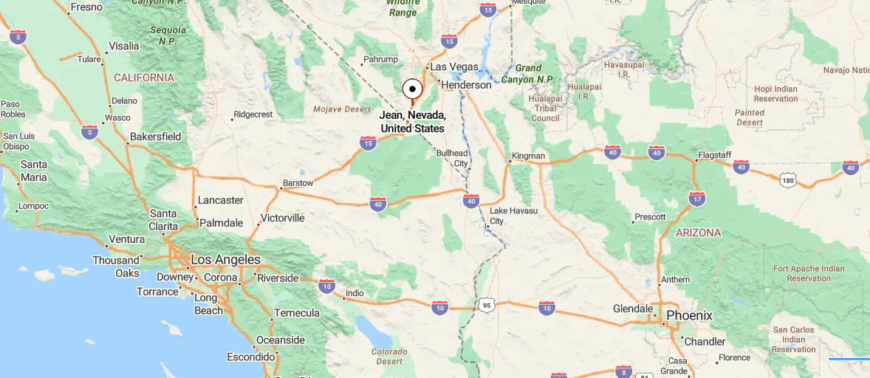
Jean, Nevada sits in southern Clark County, about 32 miles south of Las Vegas along Interstate 15 and 12 miles north of the California line. It’s easily reached via Exit 12, where the highway dips into desert flats before arriving at a quiet roadside hub marked by a massive travel plaza and old casino sites.
The route is simple but stark—just desert, sky, and the hum of long-haul trucks. Close to the city, but wrapped in stillness, Jean feels like a brief, sunbaked pause before the next stretch of road.
15. Pahrump’s Expansive Isolation
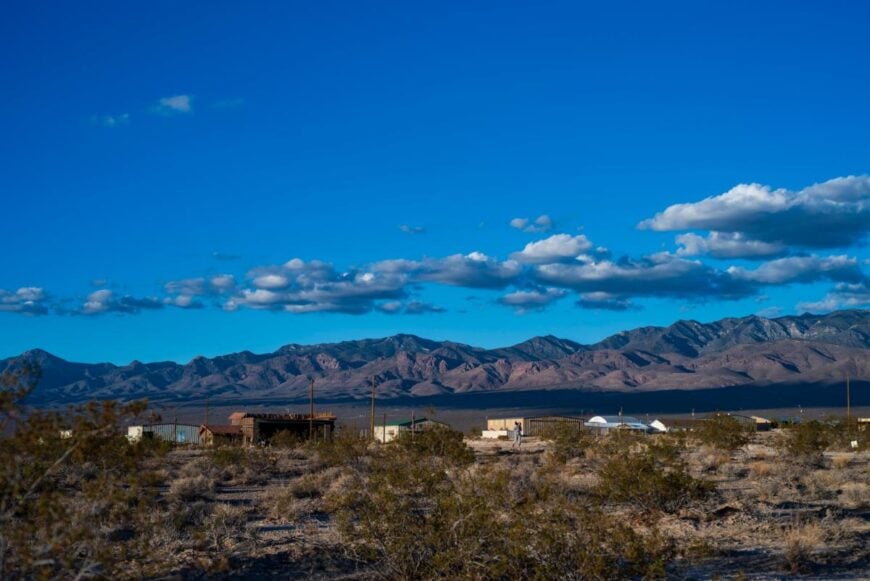
Cradled between desert flats and the Spring Mountains, Pahrump rests quietly about an hour west of Las Vegas—close on the map, but far in spirit. Its wide streets and open land create a feeling of space that stretches beyond sight, where silence often lingers longer than sound.
Though large by rural standards, the town moves at a calm, measured pace, wrapped in sunlight and quiet winds. You might visit Sanders Family Winery, hike Spring Mountain trails, birdwatch at Discovery Park, or explore desert art in nearby Rhyolite.
Locals earn a living through vineyards, casinos, solar energy, and small-town services. Life here flows slowly, grounded in dust, sun, and deep skies. It’s the kind of place that lets the quiet sink in and stay awhile.
Where is Pahrump?
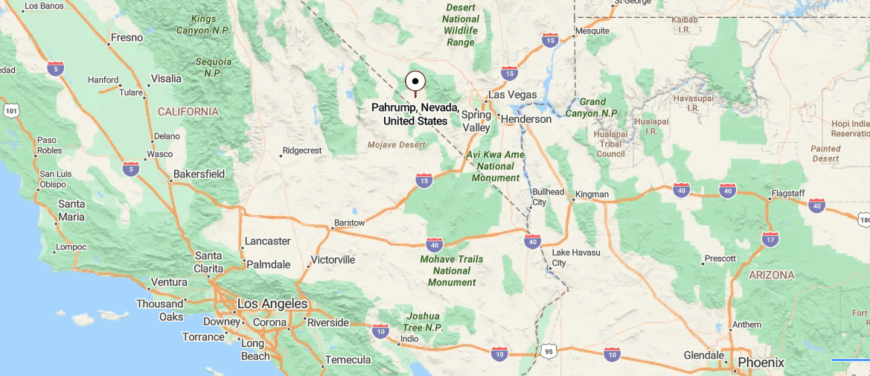
Pahrump, Nevada lies in the sun-baked Mojave Desert at the southernmost edge of Nye County, roughly 60 miles west‑northwest of Las Vegas by State Route 160 — a drive of about an hour and ten minutes. The town sits just a few miles east of the California border in a wide, flat valley ringed by distant mountain ridges.
To reach it, you simply head west from Las Vegas on SR 160, climbing over Mountain Springs Summit, then descend past sagebrush desert and small ranches before arriving at Pahrump’s spread-out grid of homes, farms, and local businesses.
In this high‑desert valley, the horizon feels vast and patient—a place where the hum of the city fades and a soft, desert stillness takes over.
14. Beatty’s Desert Gateway
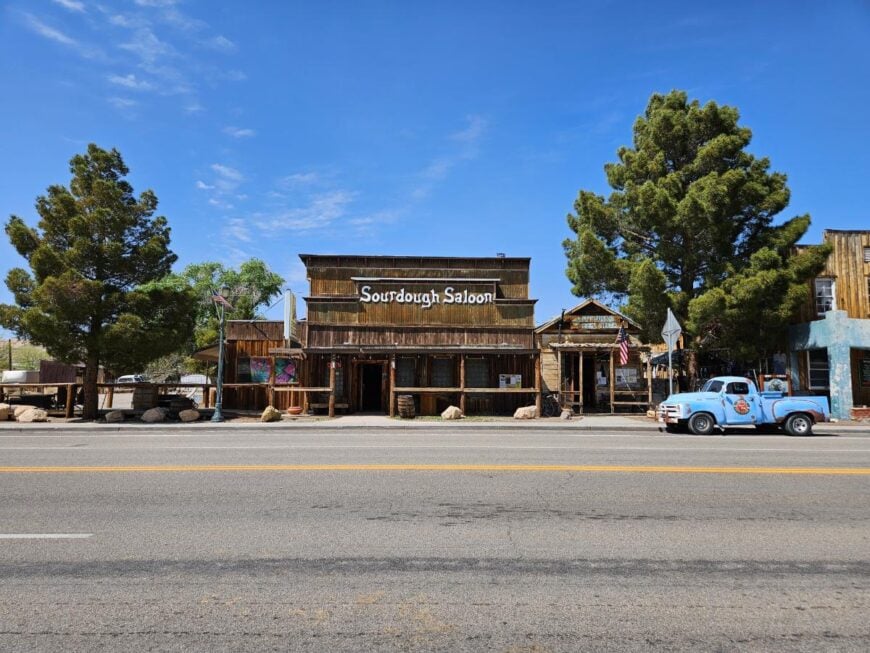
Tucked in the Amargosa Desert near Death Valley, Beatty lies along U.S. Route 95—between Las Vegas and Tonopah—but feels far removed thanks to its vast open land and quiet hills. With under 1,000 residents, the stillness is broken only by wind or a passing truck on the highway.
The vibe is rustic and a little eerie, with dusty storefronts and creosote-scented air under endless sky. You might tour the Beatty Museum, wander the ruins of Rhyolite Ghost Town, soak at Bailey’s Hot Springs, hike the dunes, or head into Death Valley just minutes away.
Mining once defined the town, but tourism and small services now keep it going. The landscape is dry, sun-washed, and open to the horizon. It’s the kind of place where silence feels like something you grow into.
Where is Beatty?
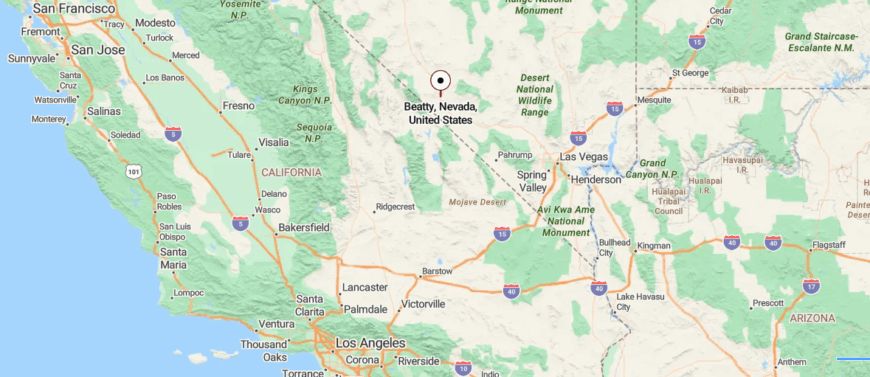
Beatty, Nevada sits in Nye County along the Amargosa River, in the wide Oasis Valley of southern Nevada. It’s about 117 miles northwest of Las Vegas via U.S. Route 95, and just 8 miles from Death Valley National Park by State Route 374.
The drive crosses open desert and sagebrush flats before passing ghost-town ruins and entering Beatty’s quiet main street. Out here, the sky feels vast and the stillness lingers—like time has slowed to match the land.
13. Tonopah’s High Desert Heritage
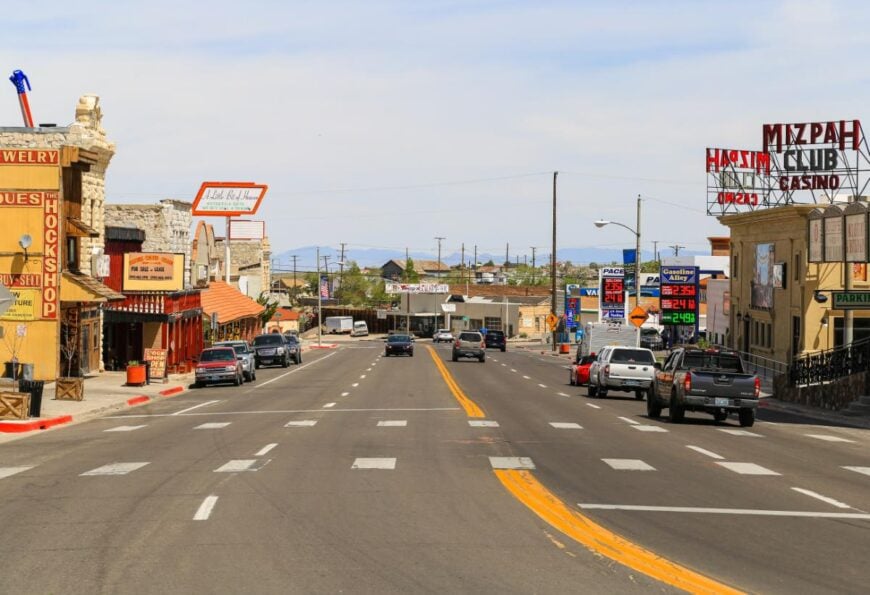
Perched nearly 6,000 feet up in Nevada’s high desert, Tonopah sits halfway between Las Vegas and Reno—yet it feels worlds away, with quiet streets and historic brick buildings echoing a bygone era. Surrounded by rugged hills and vast desert, the town is shielded from the rush of modern life, where wind and silence carry more weight than noise.
Mornings smell of dust and sage; nights fall behind dark mountain silhouettes under some of Nevada’s clearest skies. You can explore the Tonopah Historic Mining Park, visit the quirky Clown Motel, wander the old cemetery, tour the Mizpah Hotel, or stargaze under unmatched darkness.
Tourism, mining history, craft brews, and solar energy shape the town today. There’s a calm here that lingers in every corner. It’s the kind of place where silence feels like it’s telling a story.
Where is Tonopah?
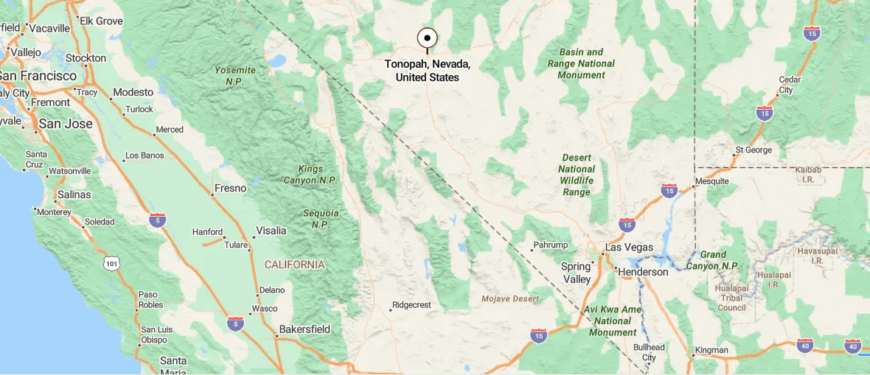
Tonopah, Nevada sits in west-central Nye County, high in the desert at over 6,000 feet between Las Vegas and Reno. It’s about 211 miles northwest of Las Vegas, reached via U.S. Route 95 through long stretches of empty highway and sagebrush plains.
The road leads into a town rich with mining history, where old stone buildings, the Mizpah Hotel, and even a clown-themed motel mark its quiet grid. Out here, the past feels close, and the silence stretches as wide as the desert itself.
12. Goldfield’s Timeworn Solitude
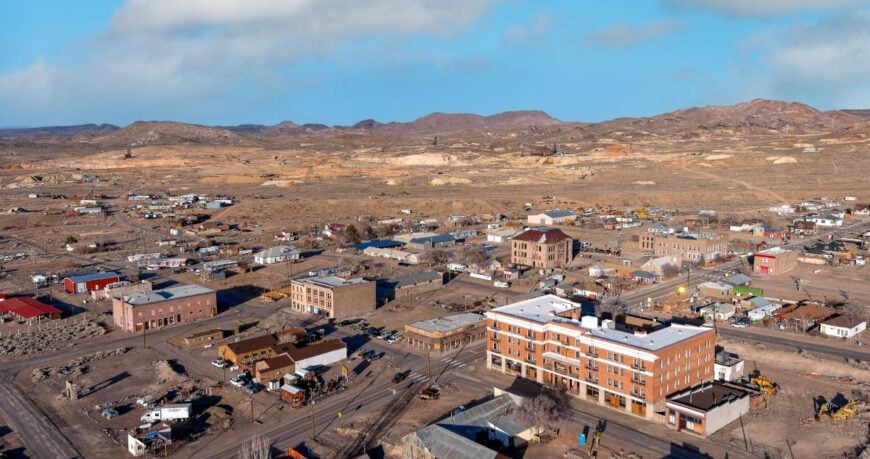
Tucked between dry hills and endless desert, Goldfield feels frozen in time—once home to 20,000 during the gold rush, now holding around 200. Its isolation is shaped by open terrain, dusty roads, and a quiet that settles deep.
The vibe is haunting and historic, with crumbling brick buildings, sun-bleached signs, and the famously eerie Goldfield Hotel. You can explore the old schoolhouse, tour the museum, visit the quirky cemetery, see the International Car Forest, or follow a historic walking tour.
Gold mining built it, but tourism and preservation keep it breathing. The landscape is all dust, stone, and sky. It’s the kind of place where silence feels like it’s waiting to be heard.
Where is Goldfield?
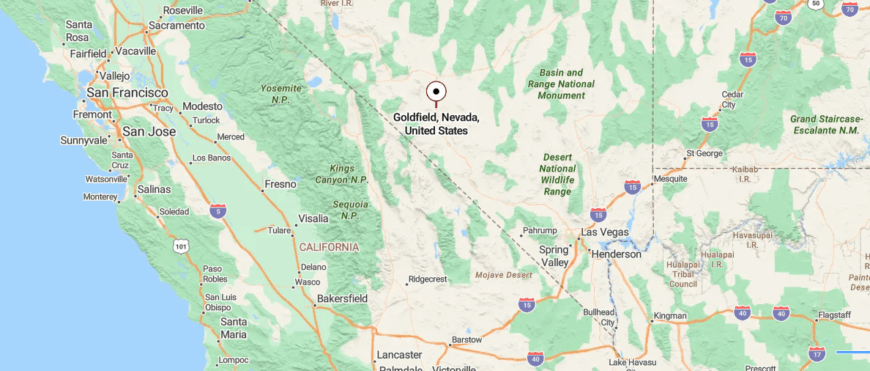
Goldfield, Nevada sits high in the Tonopah Basin of west-central Nevada, surrounded by desert hills and remnants of its mining past. It’s about 180 miles northwest of Las Vegas along U.S. Route 95, just south of Tonopah.
The drive follows a long, open highway through miles of sagebrush and quiet plains before the town’s historic buildings slowly rise into view. It’s close enough to find—but distant enough that the silence feels like it’s been waiting just for you.
11. Rachel’s Extraterrestrial Seclusion
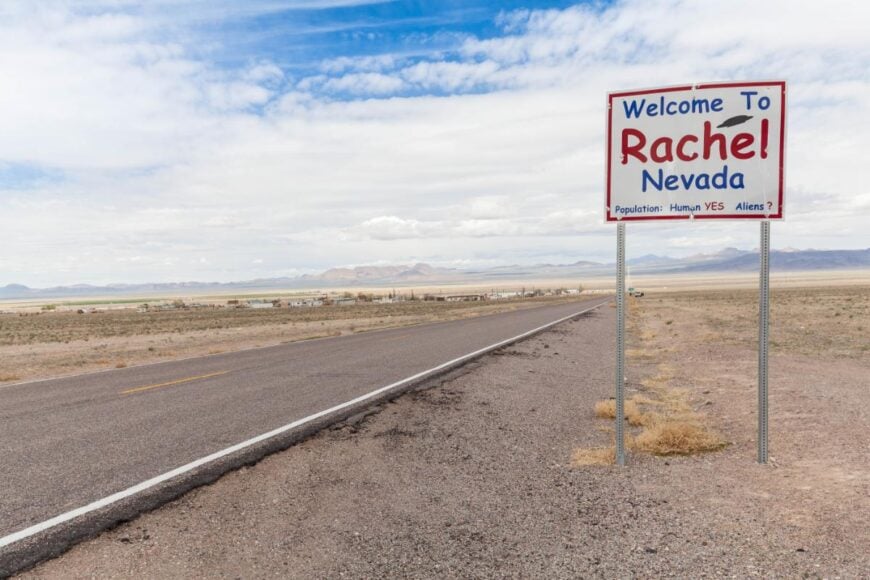
Deep in the Nevada desert along the Extraterrestrial Highway, Rachel sits more than 100 miles north of Las Vegas—small, remote, and surrounded by vast open land and military secrets. With fewer than 50 residents and no nearby towns, the isolation feels complete.
The vibe is eerie and quiet, where stargazing replaces streetlights and UFO lore hums louder than traffic. You can stop at the Little A’Le’Inn for an “Alien Burger,” browse Area 51 souvenirs, or scan the skies near the old Black Mailbox site.
A few work nearby farms or support the inn, but most of life here leans into tourism and the unknown. The desert stillness isn’t empty—it’s watchful. It’s the kind of place that makes you wonder who—or what—is out there.
Where is Rachel?
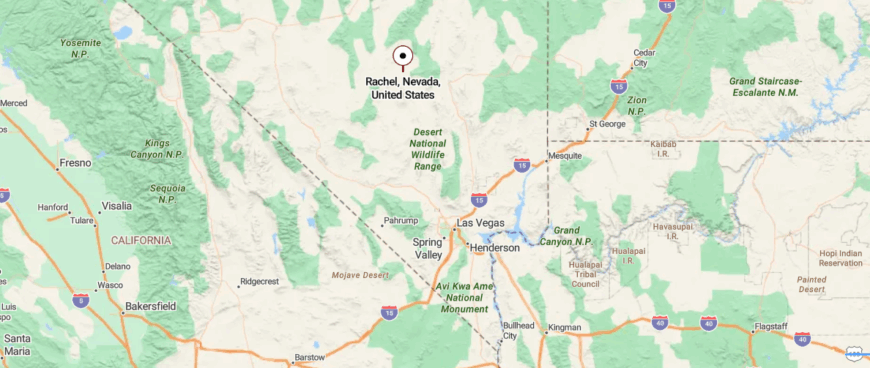
Rachel, Nevada sits in southern Lincoln County, tucked deep in the Great Basin along the remote stretch of State Route 375—known as the Extraterrestrial Highway. It’s about 147 miles north of Las Vegas, reached by taking U.S. 93 and then following SR 375 through empty desert flats and wide sky.
The road feels endless, with just sagebrush and distant hills before the town’s small cluster and the Little A’Le’Inn come into view. It’s easy enough to reach, but once you arrive, the silence makes it feel like you’ve landed on another planet.
10. Amargosa Valley’s Expansive Horizons

Amargosa Valley, with a population of around 1,500, is a hidden gem near the Nevada-California border that I’ve found to be incredibly serene. The town is known for its vast open spaces and close proximity to Death Valley National Park, making it a haven for outdoor enthusiasts like me.
Activities include exploring the stunning desert landscapes, visiting the nearby Ash Meadows National Wildlife Refuge, and stargazing under some of the darkest skies I’ve ever seen.
Agriculture and renewable energy projects are the main industries here, contributing to the community’s self-sufficiency.
What makes Amargosa Valley secluded is its remote location and the endless horizons that offer a true escape from urban life. It’s a place where the silence of the desert is both profound and comforting.
Where is Amargosa Valley?

Located in the southern part of Nye County, Amargosa Valley sits about 88 miles northwest of Las Vegas. Its seclusion is heightened by the expansive desert that surrounds it, with few large towns nearby.
Getting there involves a drive along U.S. Route 95 and State Route 373, which always feels like a journey into the heart of solitude for me. The town’s proximity to Death Valley and the lack of light pollution make it an ideal spot for those seeking tranquility and a connection with nature.
9. The Tranquil Sands of Sandy Valley

Sandy Valley is a small community of around 2,000 residents that I’ve come to appreciate for its peaceful desert living. The area offers spacious properties, ideal for those looking to embrace a rural lifestyle with room for horses and other livestock.
Activities here include horseback riding, community events at the local community center, and enjoying the breathtaking sunsets over the desert sands. With minimal commercial development, the main industries revolve around agriculture and small businesses.
Sandy Valley’s seclusion stems from its location nestled between mountain ranges and its distance from major highways. It’s the kind of place where neighbors know each other, and life moves at a slower, more deliberate pace.
Where is Sandy Valley?

Sandy Valley is situated about 50 miles southwest of Las Vegas, close to the Nevada-California border. Its remoteness is due to its location off the main thoroughfares, accessible primarily via State Route 160 and a series of rural roads.
Driving there, I often feel like I’m leaving the hustle behind as the landscape becomes more expansive and untamed. The surrounding mountains and open desert contribute to the town’s secluded feel, offering a genuine escape for those seeking simplicity and space.
8. Peaceful Desert Life in Indian Springs

Indian Springs, with a population of approximately 1,000, is a quiet community that I’ve found to be a peaceful retreat north of Las Vegas. The town offers open spaces and a slow-paced lifestyle, a stark contrast to the nearby city.
Residents and visitors can enjoy activities like hiking in the surrounding desert, visiting the nearby Creech Air Force Base aviation museum, and watching wildlife.
The main industry here is connected to the Air Force base, which provides employment opportunities while maintaining the area’s tranquility. Indian Springs is secluded due to its sparse population and the vast stretches of desert that envelop it. It’s a place where one can truly disconnect and recharge.
Where is Indian Springs?

Located about 45 miles northwest of Las Vegas along U.S. Route 95, Indian Springs is easy to reach yet feels worlds apart from the city’s bustle. The town’s seclusion is enhanced by the Mojave Desert that surrounds it, offering expansive views and open skies.
Every time I visit, the quiet drive through the desert sets the tone for the serenity that awaits. The simplicity of getting there, paired with the remoteness of the location, makes Indian Springs an accessible escape into solitude.
7. Hidden Oasis of Nelson

Nelson is a tiny ghost town that I’ve discovered to be rich with history and rustic charm. With a population of less than 50, it’s known for the Techatticup Mine, one of Nevada’s oldest and most famous gold mines.
Visitors can tour the mine, explore the quirky collection of vintage vehicles and buildings, and even find unique photo opportunities in this desert oasis. There isn’t much in the way of industry nowadays, aside from tourism related to the mine.
Nelson’s seclusion comes from its remote location and the preserved historic sites that make it feel like a step back in time. It’s a place that captures the imagination and offers a quiet retreat from the modern world.
Where is Nelson?

Nestled in Eldorado Canyon, Nelson is about 25 miles southwest of Boulder City, accessible via Nevada State Route 165. The winding road through the desert and mountains always excites me as it leads to this hidden gem.
The town’s seclusion is due to its off-the-beaten-path location, surrounded by rugged terrain and the Colorado River nearby. Getting there requires a bit of a journey, but the solitude and unique atmosphere make the trip well worth it.
6. The Quiet Community of Searchlight

Searchlight, with a population of around 500, is a historic town that I’ve found to be a quiet haven away from urban centers. Known for its rich mining history dating back to the late 1800s, the town offers a glimpse into Nevada’s past.
Activities include visiting the Searchlight Historic Museum, exploring old mining sites, and enjoying expansive desert views. The main industries are mining and some small businesses catering to travelers.
Searchlight’s seclusion is a result of its location far from major cities and the open desert that surrounds it, creating a serene environment perfect for reflection and relaxation.
Where is Searchlight?

Located about 60 miles south of Las Vegas along U.S. Route 95, Searchlight sits at a crossroads leading to Laughlin and the Colorado River. Its remote setting, away from the hustle of larger towns, gives it a peaceful ambiance that I always appreciate when passing through.
The simplicity of the town and the vastness of the surrounding desert accentuate its secluded nature, making it an ideal spot for those seeking quietude.
5. Mount Charleston’s Alpine Retreat

Mount Charleston is a small mountain village that I’ve come to love for its alpine environment—quite a contrast to the desert below. With a population of around 350, the town is noted for its cooler climate, wooded surroundings, and the towering peaks of the Spring Mountains.
Activities include hiking, skiing at the Lee Canyon resort, and enjoying the natural beauty of the Humboldt-Toiyabe National Forest. The primary industries are tourism and hospitality, catering to visitors seeking a mountain escape.
What makes Mount Charleston secluded is its elevation and the dense forest that envelops it, providing an escape from the desert heat and a sense of isolation amid nature.
Where is Mount Charleston?

Just 35 miles northwest of Las Vegas, Mount Charleston is accessible via State Route 157, yet it feels like a world apart. The winding mountain roads leading up to the village always fill me with anticipation for the crisp air and serene environment.
The town’s seclusion is due to its mountainous location and the limited access roads, making it a true retreat from the city’s fast pace. It’s a place where I can breathe deeply and enjoy the tranquility of the alpine setting.
4. Rural Charm of Cal-Nev-Ari

Cal-Nev-Ari is a unique small community with a population of about 350, and it’s one of those places that intrigues me every time I visit.
Located near the intersection of California, Nevada, and Arizona borders, the town offers expansive desert vistas and a distinct small-town atmosphere. Activities include visiting the local casino, flying into the private airstrip, and exploring the surrounding desert.
The main industries are hospitality and aviation-related businesses. Cal-Nev-Ari’s seclusion comes from its remote desert location and the wide-open spaces that surround it, giving it a quiet charm that’s hard to find elsewhere.
Where is Cal-Nev-Ari?

Situated along U.S. Route 95, about 70 miles south of Las Vegas, Cal-Nev-Ari is a bit off the beaten path. I enjoy the drive through the Mojave Desert to get there, as it enhances the feeling of entering a secluded spot.
The town’s proximity to the junction of three states adds to its unique character, while the sparse population and remote setting contribute to its tranquil atmosphere. It’s an ideal destination for those looking to experience rural desert life.
3. Remote Wilderness in Cold Creek

Cold Creek is a secluded area at the foothills of the Spring Mountains that I’ve found to be a haven for nature lovers. With a population of just over 200, residents enjoy large lots and untouched natural surroundings.
The area is famous for its wild horses roaming freely, adding a magical touch to the landscape. Activities include hiking, wildlife spotting, and simply enjoying the peace and quiet of the wilderness.
There are no significant industries here, which helps maintain its untouched charm. Cold Creek’s seclusion is due to its remote location and limited access, making it a perfect retreat for those seeking solitude and a deep connection with nature.
Where is Cold Creek?

Cold Creek is located about 50 miles northwest of Las Vegas, accessible via a turnoff from U.S. Route 95 onto Cold Creek Road. Every time I make the drive, the transition from city to desert to mountain foothills is striking.
The town’s remoteness is heightened by the single road leading in and out and the expansive wilderness that surrounds it. The journey there feels like an adventure into the wild, rewarding visitors with tranquility and natural beauty.
2. Serene Living in Blue Diamond

Blue Diamond is a small village with a population of around 300 that I’ve always found enchanting. Nestled within the Red Rock Canyon National Conservation Area, the town is surrounded by some of Nevada’s most picturesque landscapes.
Activities include hiking, rock climbing, and mountain biking on the numerous trails that weave through the stunning red sandstone formations. The main industry is tourism, but the village retains a peaceful, residential feel.
Blue Diamond’s seclusion comes from its location within a protected area and the natural barriers that keep the bustle of Las Vegas at bay. It’s a serene haven for outdoor enthusiasts and anyone seeking a quiet community.
Where is Blue Diamond?

Located just 15 miles southwest of Las Vegas along State Route 159, Blue Diamond is surprisingly close yet feels delightfully removed from the city’s rush. The scenic drive through Red Rock Canyon always leaves me in awe, setting the stage for the village’s tranquil ambiance.
The town’s seclusion is due to its placement within the conservation area and the limited development allowed there. Access is straightforward, but the enveloping natural beauty makes it feel like a secluded paradise.
1. The Historic Mining Town of Goodsprings

Goodsprings is a quiet, historic town with a population of about 200 that holds a special place in my heart. Nestled away from the bustle of Las Vegas, it’s known for its old mining sites and the famous Pioneer Saloon, one of Nevada’s oldest saloons.
Activities include exploring the remnants of the mining era, grabbing a bite at the saloon, and hiking in the surrounding hills. There isn’t much industry left besides tourism, which revolves around the town’s rich history.
Goodsprings’ seclusion is due to its location off the main highways and its small size, offering a peaceful atmosphere that lets you step back in time. It’s a charming escape where the echoes of the past blend seamlessly with the quiet of the desert.
Where is Goodsprings?

Goodsprings is situated about 35 miles southwest of Las Vegas, accessible via Interstate 15 and State Route 161. The short drive through the desert leads to a town that feels hidden away, a contrast I’ve always appreciated. Its seclusion is enhanced by the surrounding arid landscape and the lack of urban development.
Getting there is easy, but the sense of discovery upon arrival makes it feel like a well-kept secret, perfect for those looking to uncover a piece of Nevada’s history while enjoying a tranquil setting.



